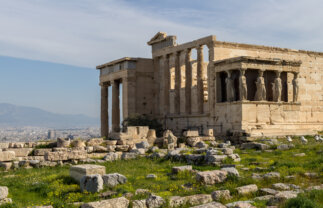
Best Historical Sites in Greece
Tuesday 23 August 2022
Greece provides incredible archaeological sites and important museums to enhance any trip to this beautiful country. Although many historic sites are from classical Greek times, there is also medieval and Bronze Age architecture and archaeology. Knossos for example, provides an insight into the impressive art and architecture of the Bronze Age Minoan civilisation.
The Archaeological Site of Delphi
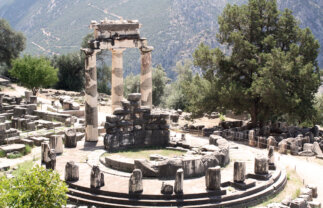
According to the ancient traveller and writer Pausanias, the precept ‘Know Thyself’ was inscribed at the Delphic Temple of Apollo. In ancient Greece, important citizens would seek the advice of the priestly oracle at Delphi. UK travellers on guided historical Greece tours are sure to include this site on their itinerary. The archaeological site sits on a mountainside and overlooks the valley below. It contains a range of important temples, treasuries, and theatres. Important unearthed finds are displayed at the Delphi Archaeological Museum.
Acropolis of Athens
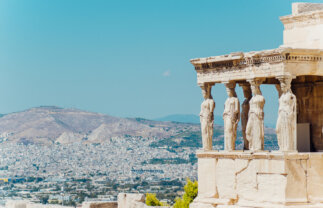
With stunning views of Athens and the Sea, the Acropolis stands on a precipice and contains formidable edifices including the Parthenon. Everyone on a trip to Greece should visit the Acropolis to gain an insight into the great civilisation of the ancient Greeks.
Odeon of Herodes Atticus
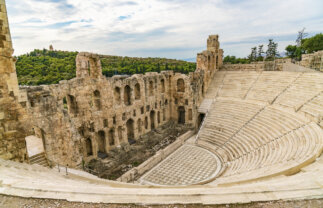
Located near the Acropolis in Athens, Herodes Atticus commissioned the open-air musical amphitheatre named after him. He was a Greek rhetorician and Roman Senator during the period of Roman Rule. Since the amphitheatre was restored in the 1950s, it has regularly hosted performances. It is a spectacular venue for the annual Athens and Epidaurus Festivals. Seeing a performance there is unforgettable.
Temple of Hephaestus
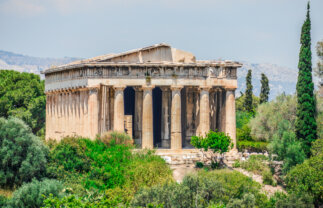
The Temple of Hephaestus in Athens has had a history of continuous use of one kind or another and has thereby been very well preserved. The intact details of the building give a sense of the highly developed Greek design aesthetic. As the temple lies on a small hill, there are magnificent views of the Acropolis.
Panathenaic Stadium
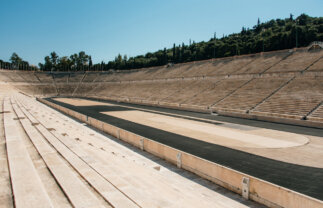
This racing and sporting stadium was built in marble and is a masterpiece of architectural simplicity. You will find it in present-day central Athens, where it remains in use – it was an Olympic stadium in 2004 and hosts musical and sporting events. When you stand on the terraces, you can truly imagine the athletes performing and the crowds of ancient Greece cheering them on. Wonderous.
Mycenae
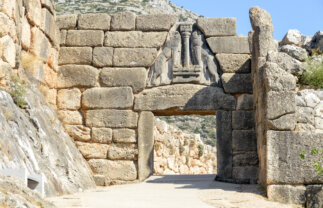
Located on a hill in the Peloponnese Peninsular 100 kilometres from Athens, Mycenae was inhabited for millennia and was the prosperous centre of the Greek mainland and eastern Mediterranean for four centuries from the 15th century B.C.
Mycanae was the crucible of ancient Greece culture. The Iliad recounts King Agamemnon’s siege on Troy. Although the archaeological remains are impressive, it is also the role of Mycenae in Greek culture and mythology that makes it such an intriguing site to visit.
Archaeological Museum of Pella
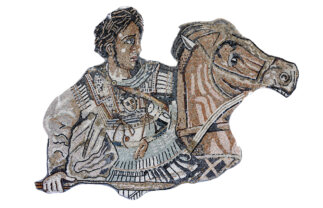
In the north of Greece is the region of Macedonia, where the city of Pella was once the capital of Alexander the Great’s empire. The Archaeological Museum of Pella gives you a tremendous opportunity to gain a sense those historic times. You also have the privilege of seeing mosaics such as the Stag Hunt which continue to be considered great works of art.
Monastery of the Holy Trinity at Meteora
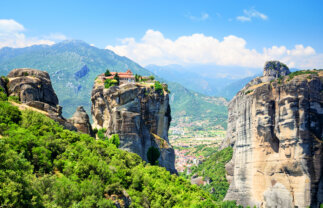
In the Paneas Valley in the central mainland of Greece rise a series of spectacular rock columns, on which more than twenty monasteries are perched, creating a vision like something painted in a medieval illuminated text.
The Monastery of the Holy Trinity floats four hundred metres up and was built as a haven and sanctuary for monks of that politically tumultuous period in history. The panoramic views start as you walk the trail and rise up the steps. At the top sits the delightful Chapel of St John the Baptist, hewn from the rock, and decorated with frescoes.
Ancient Theatre at the Sanctuary of Asclepieion
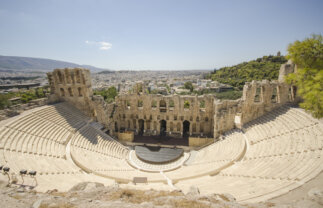
You will be impressed by the sheer size of the amphitheatre at Asclepieion, though you should also appreciate the innovations in its design which create fantastic acoustics and enhanced the spectators’ experience. The theatre was for musical and drama performances in honour of the God of Medicine; it was part of a healing complex which was famous in classical Greece times.
The small onsite museum provides explanations of artefacts and statues, and we would certainly recommend viewing the ruins of the sanatorium.
The Palace of Knossos, Crete and the Heraklion Archaeological Museum

The site of Knossos has been settled since Neolithic times. The palace complex dates from the Bronze age. Knossos was then at the centre of important Mediterranean trade routes and was an early city of tens of thousands of citizens at the centre of the Minoan civilisation. Fabulous frescoes and ceramic art capture the culture of the Minoans. The Heraklion Archaeological Museum near Knossos displays a revelatory range of art and other artefacts. It makes sense to visit the museum before the Knossos Palace site as you will then have a better understanding of what you are seeing.